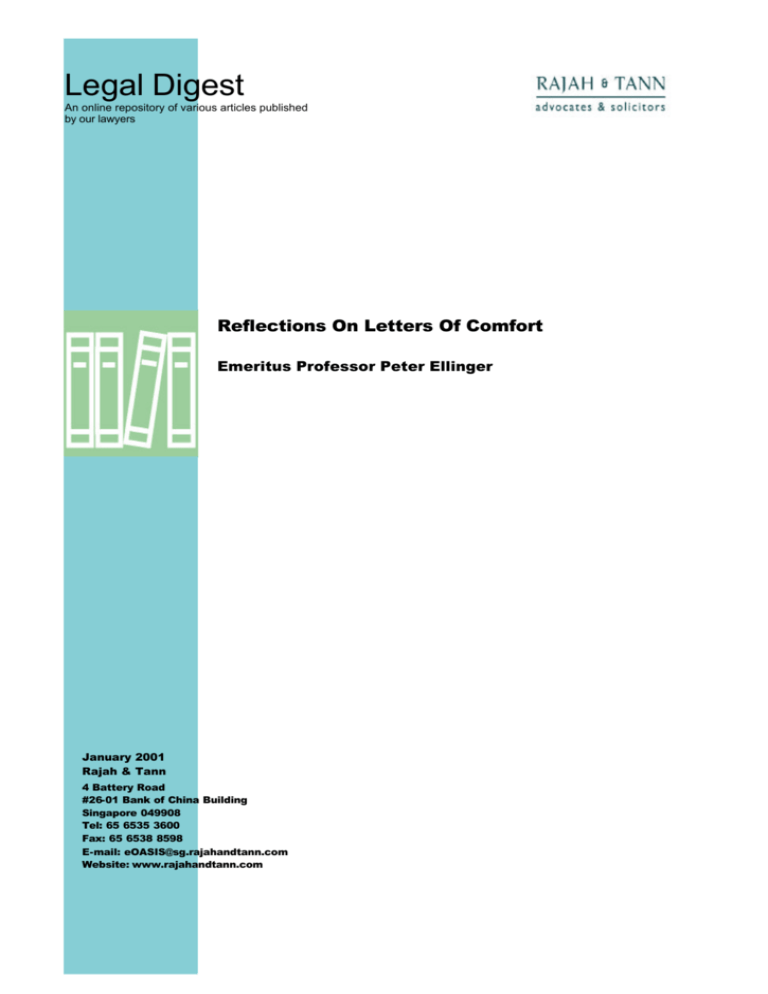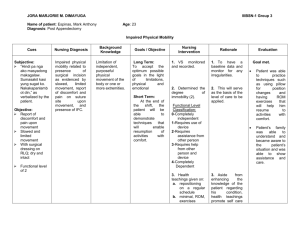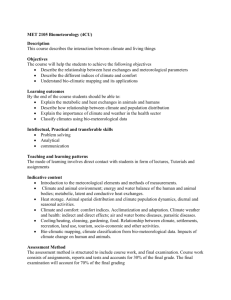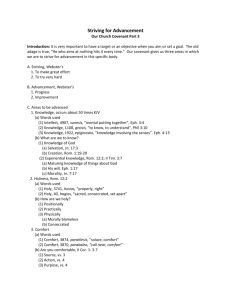
Legal Digest
An online repository of various articles published
by our lawyers
Reflections On Letters Of Comfort
Emeritus Professor Peter Ellinger
1
January 2001
Rajah & Tann
4 Battery Road
#26-01 Bank of China Building
Singapore 049908
Tel: 65 6535 3600
Fax: 65 6538 8598
E-mail: eOASIS@sg.rajahandtann.com
Website: www.rajahandtann.com
Legal Digest
Banking
Reflections On Letters Of Comfort
Emeritus Professor Peter Ellinger
Does a letter of comfort constitute a promise enforceable against its issuer or is its effect
confined to the creation of a moral rather than a legal obligation? This question arises in
modern trade mainly because businessmen frequently fail to reach a consensus in their bargains
about the nature of the letter of comfort to be issued as a collateral. The object of this article is
to compare the answers given to the question in English and Australian cases with the solution
provided in civil law countries.
1
THE Court of Appeal’s decision in Kleinwort Benson Ltd. v. Malaysia Mining Corp. Bhd. has
2
generated a controversy concerning the legal nature and effect of letters of comfort. In certain
business circles their Lordships’ decision was greeted with surprise as it was thought to be
inconsistent with the reasoning of the Court of Appeal’s earlier decision in Chemco Leasing SpA
3
v. Rediffusion Plc. Notably, Kleinwort Benson was not followed by Rogers J. in the Supreme
4
Court of New South Wales in Banque Brussels Lambert S.A. v. Australian National Industries. It
is also noteworthy that their Lordships’ approach is at variance with the analysis of letters of
5
comfort in civil law systems. The controversy centres on the question of whether, prima facie,
the issuer of a letter of comfort intends to assume a legal obligation or restricts himself to the
giving of a purely moral but legally unenforceable duty. The object of this article is to consider the
problems involved from a comparative point of view.
A consideration of the background of the facility sheds some light on the origin of the current
debate. The letter of comfort - known as Patronatserklärung in German and as lettre de confort in
French - is of recent origin. Schütze suggests that, in Germany, letters of comfort made their
6
appearance in the mid-sixties. A comparative study, conducted under the auspices of the
7
International Bar Association, confirms this dating and suggests that the popularity of the facility
increased steadily during the seventies. It is, indeed, clear that, in the course of that decade,
8
letters of comfort became widely used in both civil and common law countries. At one stage they
were, for instance, issued by multinational banks to enhance investors’ confidence in offices and
subsidiaries opened in Luxembourg. 9 Predominantly, though, letters of comfort have always
1
2
3
4
5
6
7
8
9
[1989] 1 W.L.R. 379, reversing Hirst J.’s decision reported in [1988] 1 All E.R. 714.
See Brown, “The Letter of Comfort: Placebo or Pr omise?” [1990] J.B.L. 281.
[1987] F.T.L.R. 201, affirming Staughton J.’s unreported decision of 19 July 1985.
Unreported, Sup. Ct. of N.S.W., decision of Rogers C.J., Comm. D., of 12 December 1989. And see also Paulger v.
Butland Industries Ltd., unreported, C.A. (N.Z.), decision of 25 October 1989.
Schütze, Münchner Vertrags-Handbuch, 2nd ed., Vol. 3, p. 430 et seq. (Germany); Trib. Com. Paris, 27.10.1981,
Banque 1981; 1455; Mont. 10.1.1985, Banque 1985, 305. And see the excellent comparative analysis of Böhlboff,
“Letter of Responsibility” (1978) 6 Int. Bus. Lawyer 288.
Op cit, p. 432. And see Stecher, “Harte” Patronatserklärungen, Köln 1974, p. 3, who points out that the German
collection of standard bank forms, of 1966, did not include a reference to letters of comfort.
Böhlhoff, op cit, p. 288 at p. 303 per Schneider.
My first experience with problems relating to letters of comfort was in a seminar conducted in Melbourne in 1977, in
which a participant raised the question of whether such a facility could be regarded as a standby credit.
Steerer, loc cit.
Emeritus Professor Peter Ellinger
Rajah & Tann, Knowledge Management
January 2001
Page 1
Legal Digest
Banking
been issued by a parent company, or by a holding company, in order to back the affiliate’s
financial commitments, such as the repayment of loans obtained from banks or the settlement of
balances due for the acquisition of goods and services acquired on credit.
Originally, the use of letters of comfort in lieu of traditional security devices, such as guarantees
or letters of indemnity, was motivated by the wish of the issuer - the parent company - to refrain
from granting a facility that would have to be disclosed as a contingent liability in the balance
10
sheet.
It was also considered a suitable substitute where the execution of a guarantee was
ultra vires the issuer’s powers or thought to be precluded by a particularly widely phrased
negative pledge clause included in a charge executed by the parent company,
One significant consequence of this background is that, right from the time of their introduction,
letters of comfort have fallen into a legal twilight zone. On the one hand, their object is to furnish
some security to the addressee. On the other hand, they are not meant to constitute a clearly
defined, and hence a readily classifiable, obligation of the issuer. This patent ambiguity has been
underscored with the growth in their popularity. At present, they are frequently used - even in a
situation in which the issuer has the power, the ability and the right to issue a guarantee - with the
object of giving the addressee “something” but not “everything” furnished by a proper security.
One result of this ambiguity of intention is that the exact wording of a given letter of comfort often
constitutes the subject of protracted negotiations. Occasionally, the final text of a letter of comfort
11
is the result of the exchange of numerous drafts.
The unclear language resulting from such protracted negotiations - occasioned by the fact that
the parties are at cross purposes - is the very cause of the controversy and uncertainty respecting
the nature and effect of letters of comfort, reflected in the cases mentioned at the outset. It is only
natural that courts are hard pressed to provide a clear cut answer about the intention of parties
who, in reality, are in disagreement. The difficulty of providing a conclusive analysis is
exacerbated by the fact that letters of comfort do not follow a set text or standard form. However,
Continental writers have tried to introduce some order by means of a basic classification of the
most familiar versions. They suggest that letters of comfort can be broadly divided into two
groups: the “hard” form and the “soft” form.
12
In the “hard” type the issuer usually incorporates a statement in which he confirms his awareness
of the transaction involved and, in one way or another, indicates that it is his intention or policy to
persuade the affiliated company to stand by its commitments. Some facilities include also a
disclosure of the issuer’s interest in the affiliate, such as, for instance, his holding 40% of its share
capital, coupled with a promise either to maintain the stake involved or to give the addressee
notice if a disposal of the shares becomes imminent. As indicated by its title, the “soft” type of
letter of comfort is less conclusive than the hard form. The issuer confirms his awareness of, and
possibly his support for, the transaction but refrains from giving any express assurance
respecting his policy or future intentions.
10
11
12
Schütze, loc cit; Stecher, loc cit; Brown, op cit, p. 281.
See, for instance, Banque Brussels Lambert S.A.v. Australian National lndustries Ltd., ante note 4, where the parties
appear to have exchanged well over ten drafts! See also Stecher, op cit, p. 8, who suggests that occasionally there
is a battle over each word of the final text.
Schütze, op cit, pp. 432-433; Stecher, op cit, p. 8.
Emeritus Professor Peter Ellinger
Rajah & Tann, Knowledge Management
January 2001
Page 2
Legal Digest
Banking
Whilst the two types of letter of comfort are treated as having different effects there is one
13
fundamental principle which applies to both: a letter of comfort is not a guarantee.
The only
exception to this principle arises where a letter of comfort includes words denoting the issuer’s
14
intention to bind himself as a guarantor. Thus, in Chemco Leasing SpA v. Rediffusion Plc
Staughton J. held the issuer to have assumed the liability of a guarantor because he undertook,
in the letter of comfort, to assume responsibility for the payment of the affiliate’s debts and was to
be subrogated to the addressee’s rights upon their discharge.
15
An even more extreme case was Paulger v. Butland Industries Ltd. The managing director of D
Ltd., which was facing financial difficulties, circulated a letter, written on the firm’s letterhead, in
which he asked for the “tolerance” of all creditors whilst a certain deal concerning the acquisition
of the firm’s business by another entity was being finalised. He advised that D Ltd. “would make
good all outstanding matters within 90 days” and added: “The writer personally guarantees that all
due payments will be made”. Delivering the judgment of the New Zealand Court of Appeal, Hardie
Boys J. held that a reasonable man would have concluded that the general manger’s intention
was to give a personal assurance that the creditors would be paid. The letter, therefore,
constituted a guarantee.
Clear words, of the type used in Chemco or in Paulger, are, however; rarely used in letters of
comfort. Indeed, the usual forms - including “hard” letters of comfort - refrain from defining the
issuer’s undertaking. German writers describe these standard types of letters of comfort as akin
16
to guarantees but as “falling short of them”.
The main reason for this is that, even in the “hard”
type of letter of comfort, the issuer does not give an express undertaking to pay the affiliate’s debt
17
18
on its default.
The very same distinction is emphasised in an Australian authority and is
19
implicit in an unreported English case.
The point is of considerable practical significance. Unlike
a creditor, who is entitled to sue the guarantor in debt upon the debtor’s default, the addressee of
a letter of comfort is, at best, entitled to bring an action in damages. The amount recoverable may
not necessarily equal the sum lent to the affiliate.
But whilst there is agreement on this specific aspect concerning the addressee’s rights, there is
no consensus respecting the extent, the nature and the scope of the issuer’s liability. To date, the
nearest analysis is provided by German writers. The “soft” letter of comfort is treated as a
manifestation of the issuer’s intention of inducing the affiliate to perform its contracts. At the same
time, the inconclusiveness of the text is thought to demonstrate the issuer’s refusal to assume a
legally binding commitment. German writers describe the facility as a mere expression of
20
goodwill, aimed to reassure the addressee.
By contrast, the “hard” letter of comfort is
13
14
15
16
17
18
19
20
See, in particular, Hirst J. in Kleinwort Benson Ltd, v. Malaysia Mining Corp. Bhd.[1988] 1 All E.R. 714 at pp. 722723.
Ante, note 3.
Unreported, decision of 25 October 1989.
Bergström, Schultz and Käiser, Garantiverträge im Handeslverkehr , 1972, p. 32; Schütze, op cit, p. 433. The point
has been accepted judicially, OLG Stuttgart, 21.2.1985, WM 1985, 455; and see LG Frankfurt, 21.10.1981, (1982) 3
Zeitschrfit für Wirtschaftsrecht u. lnsolvenzrecht, App. 013.
Stecher, op cit, pp. 70-71; Franken, “The Force of Comfort Letters” [1985] Int. Fin. Law Rev., pp. 14 - 15.
Banque Brussels Lambert S.A. v. Australian National Industries Ltd, ante note 4, per Rogers J.
Re Augustus Barnett & Son Ltd., unreported decision of Hoffman J. of 7 December 1985.
Schütze, op cit, p. 433; Ber gström, op cit, p. 32.
Emeritus Professor Peter Ellinger
Rajah & Tann, Knowledge Management
January 2001
Page 3
Legal Digest
Banking
considered a legally binding undertaking, although the reasoning supporting this conclusion is not
21
uniform. Thus, Stecher regards the “hard” letter of comfort as a contract for the benefit of a third
party, in which the issuer undertakes to compensate the addressee for losses sustained from the
22
non-performance of the promises made in the facility. More recently, Schütze describes it as a
Gewährleistungsvertrag, which means, basically, a contract for the performance of a specific
service or act. This analysis leads him to the conclusion that there is need for the addressee’s
23
acceptance, which, however, may be implied from the circumstances. A similar view has been
24
expressed by a French author, who describes the letter of comfort as an obligation de faire,
which means a commitment to perform.
It is, thus, clear that civil law systems, just as common law systems, have certain difficulties with
the precise analysis of the legal nature of a letter of comfort. Their strength lies in the recognition
of the distinction between the “hard” and the “soft” type and in the formulation of certain criteria
for distinguishing between the two. Basically, a letter of comfort is considered “soft” if all it
includes is the issuer’s statement of his awareness of his transaction and a description of his
connection with the affiliate. A mere indication that the issuer does not have the intention of
decreasing his stake in the affiliate in the foreseeable future does not necessarily change the
nature of the facility. It becomes a “hard” letter of comfort only if the issuer assumes a
commitment of one type or another, such as his undertaking to see to it that the affiliate remains
25
in a position to perform its financial duties or a promise to retain the existing shareholding.
Although this broad distinction may not always provide a ready determination of a specific facility
it furnishes a reasonably clear general yardstick.. Whilst the common law systems may, in many
cases, reach the same conclusion about the binding nature of a given letter of comfort, the route
by which they reach their destination tends to be more winding.
26
Chemco Leasing SpA v. Rediffusion Plc - the first case in which letters of comfort were
considered in detail by an English court - furnishes a good illustration of the current common law
analysis. A member of the Chemical Bank group, Chemco, granted a manufacturer of electronics,
CMC, certain lease financing facilities. One of the securities obtained by Chemco was a letter of
comfort issued by R Ltd., which owned CMC’s share capital. In this document R Ltd. confirmed its
awareness of the transaction and its holding 99.1% of CMC’s shares and that, accordingly they
would “be in a position to exercise sufficient control over the administration and management of
[CMC] to ensure that its obligations to Chemco are maintained.” A further undertaking set out in
the letter read:
We assure you that we are not contemplating the disposal of our interest in [CMC] and
undertake to give Chemco prior notification should we dispose of our interest during the
life of the lease. If we dispose of our interest we undertake to take over the remaining
liabilities to Chemco of [CMC] should the new shareholders be unacceptable to Chemco.
21
22
23
24
25
26
Op cit, at pp. 73 et seq, 161.
Op cit, p. 433; and see Gerth, Atypische Kredisicherheiten, 2nd ed., 1980, p. 29.
Schütze, loc cit.
Proscour, in Böhlhoff, op cit, p. 302; and see Mont. 10.l.1985, Banque 1985, 305, which describes the “hard” letter of
comfort as constituting an obligation de résultat.
Schütze, loc cit; Gerth, op cit, p. 50 et seq.; Köhler, 1978 WM, 1338 et seq.
[1987] F.T.L.R. 201, affirming Staughton J.’s unreported decision of 19 July 1985.
Emeritus Professor Peter Ellinger
Rajah & Tann, Knowledge Management
January 2001
Page 4
Legal Digest
Banking
Subsequently, in November 1981, R Ltd. disposed of its shareholding in CMC, giving Chemco
just three days’ notice by telex. Chemco, though, raised no objections until CMC, eventually, went
into liquidation in July 1982. It was only about one month later, in August 1982, that Chemco
advised R Ltd. that it found CMC’s new shareholders unacceptable and made a claim under the
letter of comfort.
As pointed out earlier, Stanghton J. held that the letter of comfort here issued constituted a legally
binding undertaking on R Ltd.’s part. He reached this conclusion on the basis of the language of
the document, holding that the evidence of the parties as to their individual intentions respecting
the negotiations and the contract was irrelevant. Referring to the ambiguity in the document in
front of him, his Lordship observed:
When two businessmen wish to conclude a bargain but find that on some particular
aspect of it they cannot agree, ... it is not uncommon for them to adopt a language of
equivocation, so that the contract may be signed and their main objective achieved. No
doubt they console themselves with the thought that all will go well, and that the terms in
question will never come into operation or encounter scrutiny; but if all does not go well, it
will be for the courts and the arbitrators to decide what those terms mean. In such a case
it is more than somewhat artificial for a judge to go through the process, prescribed by
the law, of ascertaining the common intention of the parties from the terms of the
documents and the surrounding circumstances; the common intention was in reality that
the terms should mean what a judge or arbitrator should decide that they mean, subject
always to the view of a higher tribunal.
In the instant case, his Lordship concluded that the words of the letter of comfort indicated that R
Ltd. had assumed a legally binding undertaking. However, its obligation to take over CMC’s
liabilities was subject to Chemco giving reasonable notice of its finding a substituted shareholder
unacceptable. As Chemco had failed to give such notice it was unable to recover. The Court of
Appeal affirmed.
Whilst the language of the letter of comfort issued in Chemco left little doubt as regards the
issuer’s intention to be bound, the position was considerably less certain in the case of the facility
27
issued in the next case, Kleinwort Benson Ltd. v. Malaysia Mining Corp. Bhd. M Ltd., an English
based subsidiary of a Malaysian corporation, MMC, applied for a loan facility to be granted by KB.
Initially, KB suggested that it either issue a joint facility to MMC and M Ltd. or that MMC execute a
guarantee of a loan to be provided to M Ltd. In the end, though, the loan was granted to M Ltd.
against MMC’s letter of comfort, the operative part of which read:
[1]
27
We hereby confirm that we know and approve of these facilities and are aware of
the fact that they have been granted to [M Ltd.] because we control directly or
indirectly [M Ltd.].
[1988] 1 All E.R. 714, reversed in [1989] 1 W.L.R. 379.
Emeritus Professor Peter Ellinger
Rajah & Tann, Knowledge Management
January 2001
Page 5
Legal Digest
[2]
Banking
We confirm that we will not reduce our current financial interest in [M Ltd.] until
the above facilities have been repaid or until you have confirmed that you are
prepared to continue the facilities with new shareholders.
[3]
It is our policy to ensure that the business of [M Ltd.] is at all times in a position to
meet its liabilities to you under the above arrangement.
As a result of the collapse of the tin market, M Ltd. was unable to meet its obligations. MMC
resisted KB’s call under the letter of comfort on the argument that, whilst the first two paragraphs
of the let ter of comfort created contractual duties, the third paragraph constituted a mere
statement of policy and not a legally binding undertaking. Holding that the paragraph in question
embodied a contractual undertaking, Hirst J. gave judgment for KB. His Lordship relied on Rose
28
29
& Frank Co. v. J.R. Crompton & Bros. Ltd. and on Edwards v. Skyways Ltd. for the proposition
that a document issued in the context of a business transaction was presumed to have a legally
binding effect. He added:
30
... in business matters, it is a prerequisite for defeating the presumption that such a
stipulation had contractual force that it be expressed to the contrary ‘so precisely that
outsiders may have no difficulty in understanding what they mean.’ This paragraph
signally fails that test.
Hirst J. concluded that MMC had given an undertaking that as long as M Ltd. was owed any
monies by KB under the facility arrangement, MMC’s policy was to ensure that these liabilities
would be met.
The Court of Appeal disagreed. Ralph Gibson L.J. pointed out that the presumption, based on
Edwards v. Skyways Ltd., relied upon by Hirst J., applied only once it was established that a
commitment given in the course of business negotiations was meant to be of a contractual
nature. In that type of case, the onus would rest on the party that sought to establish that, despite
the words used, the undertaking was not meant to be legally enforceable. 31 In the instant case,
paragraph 3 of the letter of comfort, which did not constitute any contractual promise, was - on its
face - no more than a representation of fact. His Lordship supported his conclusion by referring to
the difference between the language of this paragraph and the first two paragraphs of the letter of
comfort, adding that if paragraph 3 were contractual there would have been no need to
incorporate the other two.
Ralph Gibson L.J. added that, whilst the intention of each party during the negotiations was
immaterial, it was legitimate to draw inferences from the general commercial setting of h
te
transaction. He emphasised in this context R Ltd.’s refusal to assume a joint liability or to execute
32
a guarantee. His Lordship concluded:
28
29
30
31
32
[1923] 2 K.B. 261.
[1964] 1 W.L.R. 394.
[1988] 1 All E.R. 714 at p. 724.
His Lordship cited Heilbut, Symons & Co.v. Buckleton [1913] A.C.30 at p. 38 and Esso Petroleum v. Mardon [1976l 1
Q.B. 801 at p. 804.
[1989] 1 W.L.R. 392.
Emeritus Professor Peter Ellinger
Rajah & Tann, Knowledge Management
January 2001
Page 6
Legal Digest
Banking
... I find it impossible to hold that the words in paragraph 3 were intended to have any
effect between the parties other than in accordance with the express words used. For
this purpose ... the onus of demonstrating that the affirmation appears on evidence to
have been intended as a contractual promise must lie on the party asserting that it does
but I do not rest my conclusion upon failure by [KB] to discharge any onus. I think it is
clear that the words of paragraph 3 cannot be regarded as intended to contain a
contractual promise as to the future policy of [MMCl. If paragraph 3 had been drafted by
[KB] and submitted in the form in which Hirst J. formulated its meaning, namely ‘as an
undertaking that now and at all times in the future, so long as [M Ltd.] are under any
liability to [KB] under the facility arrangements, it is and will be [MMC’s] policy to ensure
that [M Ltd.] is in a position to pay its liabilities’ it must have appeared to both parties ...
as a radically different term from that which was in fact submitted and accepted. Such an
undertaking does not fit as a matter of commercial probability with the factual
background.
The difference between the approach of Hirst J. and that of the Court of Appeal is best explained
on the background of the most recent decision on the subject: Banque Brussels Lambert S.A. v.
Australian National Industries.33 S Ltd., which was a fully owned subsidiary of SH Ltd., wished to
obtain a loan facility from the B Bank of Brussels. As a means of backing the loan, A Ltd., which
held 45% of the share capital of SH Ltd., issued their letter of comfort. They confirmed in this
document that they were aware of the loan in question and that the arrangement had their
approval. A Ltd. further confirmed: “it would not be our intention to reduce our shareholding in [SH
Ltd.] from the current level ... during the currency of this facility. We would, however, provide your
Bank with ninety (90) days’ notice of any decisions taken by us to dispose of this shareholding
...”. The actual assurance given by A Ltd. read: “We take this opportunity to confirm that it is our
practice to ensure that our affiliate [S Ltd.] will at all times be in a position to meet its financial
obligations as they fall due.”
In disregard of this letter, the text of which had been finalised after the exchange of many drafts,
A Ltd. sold its shares in SH Ltd. without giving the agreed 90 days’ notice to the B Bank. This
course of action was adopted deliberately as it was feared that, if the B Bank was given notice, it
would call up the loan. This, in turn, would have had the effect of substantially reducing the value
of the shares and of precluding their sale at the favourable price negotiated by A Ltd.
Subsequently S Ltd. went into liquidation. The B Bank brought an action to recover its loss from A
Ltd. The main issue in the case was whether the letter of comfort constituted a legally binding
undertaking, which A Ltd. had broken when it failed to give the B Bank the required notice and as
it did not ensure that S Ltd. remained able to meet its liabilities.
Rogers J. accepted that the letter of comfort did not constitute a guarantee. That much was clear
from its language. Consequently, A Ltd. was not liable in debt upon S Ltd.’s default. But this did
33
Unreported, Sup. Ct. of N.S.W., decision of Rogers C.J., Comm. D., of 12 December 1989.
Emeritus Professor Peter Ellinger
Rajah & Tann, Knowledge Management
January 2001
Page 7
Legal Digest
Banking
not mean that A Ltd. was exonerated from all liability. It could still be liable in damages for breach
of contract, provided the letter of comfort constituted a binding undertaking.
Rogers J. then turned to the analysis of the document in front of him. Referring to Edwards v.
Skyways Ltd. 34 and emphasising that the letter of comfort was issued after protracted
negotiations regarding a business transaction, Rogers J. said:
There should be no room in the proper flow of commerce for some purgatory where
statements made by businessmen, after hard bargaining and made to induce another
business person to enter into a business transaction would, without any express
statement to that effect, reside in a twilight zone of merely honourable engagement. The
whole thrust of the law today is to attempt to give proper effect to commercial
transactions.
His Honour conceded that the letter of comfort issued in the instant was not couched in language
more indicative of an intention to assume a legally binding undertaking than the letter considered
in Kleinwort Benson. Expressing concern about the minute textual analysis to which the Court of
Appeal had subjected that letter, Rogers J. observed:
Courts will become irrelevant in the resolution of commercial disputes if they allow this
approach to dominate their consideration of commercial documents.
His Honour added that the construction given to the comfort letter in Kleinwort Benson rendered
the document scrap paper.
It is clear that Rogers J.’s reasoning is diametrically opposed to the approach of the Court of
Appeal in Kleinwort Benson, adopting, in effect, Hirst J.’s robust approach in the judgment
reversed by their Lordships. The most interesting aspect of the controversy, though, is that
Rogers J. - just as Hirst J. - relied on Edwards v. Skyways Ltd. for the very proposition refuted on
the basis of this authority by Ralph Gibson L.J.!
A closer look at these decisions, in the light of Chemco, gives a clearer indication of the exact
nature of the disagreement on the question involved. Chemco - just as the Court of Appeal’s
decision in Kleinwort Benson - shows that their Lordships would uphold the liability of the issuer
of a letter of comfort, provided his intention to be bound was clearly discernible from the
document. The letter of comfort issued in Chemco was, of course, perfectly clear as regards this
point. The Court of Appeal indicated that it was, however, unwilling to take the matter further and
imply a contractual undertaking into a document that did not do so expressly. To reach a
conclusion about the specific letter of comfort confronting them, their Lordships went into a
detailed legal analysis of the three paragraphs of the Kleinwort Benson facility. The crucial point,
emphasised by Ralph Gibson L.J., was the contrast between the language of the first two
paragraphs and the third.
34
[1964] 1 W.L.R. 349 at p. 355, noting also Nemeth v. Bayswater Road Pty Ltd. [1988] 2 Qd. R. 406 at p. 416.
Emeritus Professor Peter Ellinger
Rajah & Tann, Knowledge Management
January 2001
Page 8
Legal Digest
Banking
By contrast, Hirst and Rogers JJ. were prepared to imply such a contractual intention - or an
intention to enter into a legal relationship - on the basis of the meaning attributed to the document
in the business world. This aspect of the decisions is clearly stated in the passages quoted from
Rogers J.’s decision. It is equally to be seen in Hirst J.’s emphasis of the commercial setting of
the transaction. 35 Their conclusion, in other words, was based on the meaning attributed to a
statement of policy, of the type found in the third paragraph of the Kleinwort Benson facility, by
merchants.
Both approaches have their shortcomings. On the one hand, there is a flaw in Rogers J.’s
criticism which, it will be recalled, focuses on the impropriety of subjecting contracts drawn up by
businessmen to the same rigid verbal analysis as an Act of Parliament or a “lawyers document”
such as a mortgage. There is, in reality, little evidence to support his Honour’s assumption that
letters of comfort are documents drawn up - without much scrutiny - in the course of simple
business negotiations. In point of fact, the text of the very letter of comfort considered by his
Honour was the end result of the exchange of numerous drafts, meticulously perused by the legal
advisers of both parties. Moreover, his Honour’s preference for attributing to a contract its natural
business meaning is fraught with practical difficulties. These are best explained by recalling
Staughton J.’s observation that often businessmen intentionally adopt vaguely drafted clauses,
hoping that “if all does not go well, it will be for the courts and the arbitrators to decide what those
terms mean”. Is it really sound to expect courts to discern the commercial meaning of something
purposely drafted in an indefinite or - to adopt the language of one author - in a “woolly”
36
manner?
On the other hand, Rogers J’s criticism highlights the difficulties emerging from the decision of the
Court of Appeal. Its effect is to leave the determination of the legal nature of any letter of comfort
to a meticulous analysis of the specific text under consideration. Too much may depend on the
meaning attributed to the presence, or to the absence, of specific words. The law respecting
letters of comfort is, in consequence, left uncertain. It may be retorted that the problems involved
are occasioned by the absence of clarity in the bargain leading to the issuing of the letter of
comfort. Whilst this is, undoubtedly, the case, it would, nevertheless, have been helpful if the
courts had given a clearer indication of the likely int erpretation to be given to the common types
of the letter of comfort.
It is at this juncture helpful to recall the analysis of civil law systems, involving the division of
letters of comfort into the “hard” and “soft” varieties. If the letter of comfort issued in Kleinwort
Benson were considered by a German court, it would be readily classified as being of the “hard”
type. Consequently, it would, in all probability, have been held to constitute a binding legal
undertaking even in respect of the undertaking incorporated in paragraph 3 of the facility. The
court would have reached its conclusion be comparing the text in question with the banking forms
set out and analysed in leading texts. The significant distinction between the two approaches is
not so much in the end result, or in the final determination, but in the route leading to the
conclusion. The deductive reasoning likely to have been adopted by a German court emphasises
the general commercial understanding of the subject whilst the inductive common law approach
35
[1988] 1 All E.R. 714 at pp. 723-724.
Emeritus Professor Peter Ellinger
Rajah & Tann, Knowledge Management
January 2001
Page 9
Legal Digest
Banking
tends to lead to a piecemeal result based on attempts to ascertain the indiscernible intention of
individual parties.
Notably, a route similar to that of civil courts is available at common law. However, it could be
used only if the general business understanding of the facility were established by expert
evidence. If, for instance, such evidence had been called to show that the facility in Kleinwort
Benson was regarded a binding undertaking by the business community in general, an English
court would have had no difficulty in treating the parties as having entered into their bargain on
the basis of that practice. Experience, though, shows that expert evidence- especially on a
question as unsettled as the nature of letters of comfort - may vary to a considerable extent. The
civilian tendency of placing considerable weight on texts written on the basis of the author’s
familiarity with a subject has the advantage of relying on what is, hopefully, a well-informed and,
definitely, an unsolicited view.
Two further arguments can be raised in support of the civilian approach. First, it has the
advantage of introducing greater certainly into questions of law of the type here considered than
the common law analysis. The reason for this is that the general understanding of a type of
document is given greater weight than the significance of specific words or minute points of
draftsmanship. Secondly, it enhances the value of standard forms used in given mercantile
situations. Thus, Schütze37 cites three variants of the letter of comfort and comments on their
understanding in current trade. When parties adopt one of these forms they can be reasonably
certain about the legal significance of the document involved.
*
u Emeritus Prof. Peter Ellinger is a Consultant with the firm. This article was first published in [1991]
Singapore Journal of Legal Studies 1.
Rajah & Tann is one of the largest law firms in Singapore. It is a full service firm and given its alliances, including US premier firm
Weil, Gotshal & Manges, is able to tap into a number of countries.
Rajah & Tann is firmly committed to the provision of high quality legal services. It places strong emphasis on promptness,
accessibility and reliability in dealings with clients. At the same time, the firm strives towards a practical yet creative approach in
dealing with business and commercial problems.
The information contained in this newsletter is correct to the best of our knowledge and belief at the time of writing. Specific
professional advice should be sought before any action is taken. In this regard, you may call the lawyer you normally deal with in
Rajah & Tann or e-mail the Knowledge Management team at eOASIS@sg.rajahandtann.com
© Rajah & Tann Knowledge Management. All rights reserved.
36
37
*
Wood, Law and Practice of International Finance, 1980, §13.5, cited by Staughton J. in Chemco.
Loc cit.
M. Jur. (Israel), D. Phil. (Oxon.), Advocate (Israel), Professor, Faculty of Law, National University of Singapore.
Emeritus Professor Peter Ellinger
Rajah & Tann, Knowledge Management
January 2001
Page 10







